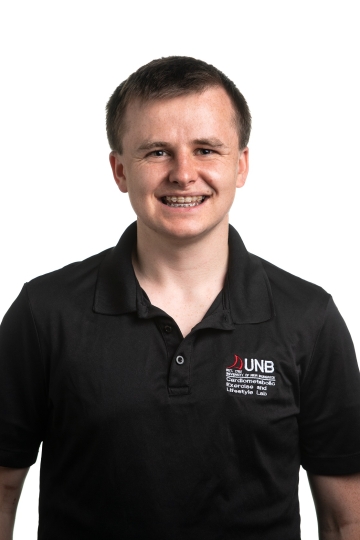Alan Bezanson
Senior Meteorological Instructor
Canadian Forces School of Meteorology
Learn About My Career
Alan Bezanson is a Senior Meteorological Instructor for the Canadian Forces School of Meteorology.
I was born/grew up in: Halifax, NS
I now live in: Winnipeg, MB
I completed my training/education at: I graduated from Prince Andrew High School and then completed one year of a Post-Secondary Arts Degree. I received my job specific training at the Canadian Forces School of Meteorology. I received all the training needed to be a meteorological technician at this school.
As an Instructor, I spend a lot of time in the classroom. Here I teach meteorological theory, observation methods, and relate this to both land and marine environments. When I don’t have classes to teach I spend time developing lessons and course material. Meteorology is a very interesting field that brings together information from multiple sources on and off this planet. You use equipment to take measurements of atmospheric conditions and learn to interpret the data you get from those observations. You also use satellite and radar imagery to predict movement of weather systems. Then, after you analyze all the information, you use it to inform upper echelon command teams on how the weather could affect military operations.
Once you become qualified as a Meteorological Forecaster, you are able to bring all of these things together to make informed predictions and create forecast products. This makes you employable at the Joint Meteorological Center. Here you get to create forecast products for land-based stations and Naval environments. You also get to make aviation forecasts, storm predictions and weather avoidance reports.
I started my military career as a reservist. I was a part-time Infantry Officer. Before that, I was an Army Cadet so I had a lot of previous military exposure. When I joined the regular forces I wasn’t even sure what this trade was all about, but I was pleasantly surprised. I did not expect that I would one day sail on a naval destroyer and get to sail all over the Atlantic and visit Europe and South America. Nor did I expect to go to Cold Lake, Alberta during one of the world’s largest fighter jet training exercises that involved multiple nations. There really is no life like it!
Public speaking is a big part of our job. Being able to stand in front of large groups of people and brief them on the weather helps grow your confidence and gives you the ability to calm your own nerves and work through adversity. Being able to influence command decisions is something most people don’t get to do until much later in their career. Being able to build a relationship and gain the trust of Command at a rank level, you normally would not get to do, makes you highly competitive in a military career. You also get to travel and have adventures all over the world.
We are a small trade and there is always plenty of opportunity to do and try new things. We also work with all parts of the Armed Forces (Army, Navy, Air Force). You really get to see and work with a very wide variety of people and equipment. Having a career that provides time for physical training is also very important to me. Even though I have a mainly office job and have to work with computers often, I still get an hour of each working day to go to the gym and keep healthy. Also, there are many base sports teams that you can participate in as well.
As a Meteorological Technician, you are responsible to keep Commanders informed of changing weather systems. Weather has a huge impact on all military operations and military equipment. What you do allows planes to fly, ships to sail, and the army to fire weapons with improved accuracy. Working with upper level Command gives you great exposure to command decision-making and the total view of military operations.
In my spare time, I practice Brazilian Jiu-Jitsu, play video games and spend time with my family. I volunteer with the cadet organization where I try to give back to a program that influenced me greatly as a kid.
Making any decision on a career path can be scary. My first night away from home I was terrified. The next day I got to meet my course mates and found my second home. In the military, you are often away from your hometown but that’s okay because the forces itself is very much like a large extended family. If you are standing at the edge of the cliff and it’s too dark to see your landing, just jump. You will find out that as hard as the military looks, it’s like landing on a pillow bed, and ultimately you come out as a stronger, more experienced person.
What I do at work
As an Instructor, I spend a lot of time in the classroom. Here I teach meteorological theory, observation methods, and relate this to both land and marine environments. When I don’t have classes to teach I spend time developing lessons and course material. Meteorology is a very interesting field that brings together information from multiple sources on and off this planet. You use equipment to take measurements of atmospheric conditions and learn to interpret the data you get from those observations. You also use satellite and radar imagery to predict movement of weather systems. Then, after you analyze all the information, you use it to inform upper echelon command teams on how the weather could affect military operations.
Once you become qualified as a Meteorological Forecaster, you are able to bring all of these things together to make informed predictions and create forecast products. This makes you employable at the Joint Meteorological Center. Here you get to create forecast products for land-based stations and Naval environments. You also get to make aviation forecasts, storm predictions and weather avoidance reports.
My career path is
I started my military career as a reservist. I was a part-time Infantry Officer. Before that, I was an Army Cadet so I had a lot of previous military exposure. When I joined the regular forces I wasn’t even sure what this trade was all about, but I was pleasantly surprised. I did not expect that I would one day sail on a naval destroyer and get to sail all over the Atlantic and visit Europe and South America. Nor did I expect to go to Cold Lake, Alberta during one of the world’s largest fighter jet training exercises that involved multiple nations. There really is no life like it!
I am motivated by
Public speaking is a big part of our job. Being able to stand in front of large groups of people and brief them on the weather helps grow your confidence and gives you the ability to calm your own nerves and work through adversity. Being able to influence command decisions is something most people don’t get to do until much later in their career. Being able to build a relationship and gain the trust of Command at a rank level, you normally would not get to do, makes you highly competitive in a military career. You also get to travel and have adventures all over the world.
We are a small trade and there is always plenty of opportunity to do and try new things. We also work with all parts of the Armed Forces (Army, Navy, Air Force). You really get to see and work with a very wide variety of people and equipment. Having a career that provides time for physical training is also very important to me. Even though I have a mainly office job and have to work with computers often, I still get an hour of each working day to go to the gym and keep healthy. Also, there are many base sports teams that you can participate in as well.
How I affect peoples’ lives
As a Meteorological Technician, you are responsible to keep Commanders informed of changing weather systems. Weather has a huge impact on all military operations and military equipment. What you do allows planes to fly, ships to sail, and the army to fire weapons with improved accuracy. Working with upper level Command gives you great exposure to command decision-making and the total view of military operations.
Outside of work I
In my spare time, I practice Brazilian Jiu-Jitsu, play video games and spend time with my family. I volunteer with the cadet organization where I try to give back to a program that influenced me greatly as a kid.
My advice to others
Making any decision on a career path can be scary. My first night away from home I was terrified. The next day I got to meet my course mates and found my second home. In the military, you are often away from your hometown but that’s okay because the forces itself is very much like a large extended family. If you are standing at the edge of the cliff and it’s too dark to see your landing, just jump. You will find out that as hard as the military looks, it’s like landing on a pillow bed, and ultimately you come out as a stronger, more experienced person.
When I was a student I enjoyed:
- Computer Science
- Geography
- Music
- Physical Education / Health
- Technology
When I was a student, I would describe myself as someone who:
- Always wanted to be outside
- Didn't really care about grades
- Engaged in volunteer activities
- Learned best “by doing”
- Liked helping people
- Felt at home in the outside, natural environment
- Liked to design or build things
- Liked to take things apart to see how they worked
- Never wanted to be in the classroom
- Played on a sports team
- Played video games
- Wanted to be in charge
- Was motivated by success
- Was really creative
- Wasn't sure what I wanted to do
Partners
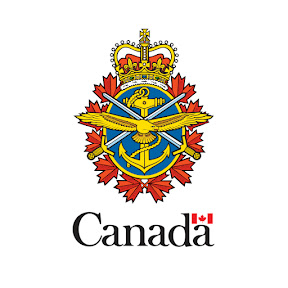
Canadian Armed Forces
Let’s Talk Science thanks the men and women of Canadian Armed Forces who have submitted a career profile to share details of their exciting careers. To learn more about the careers available in the Canadian Armed forces, check them out on YouTube, Instagram, Twitter, or Facebook.
Related Topics
Explore More Career Profiles
-
Brianna Lummerding
Career Profiles
Agronomic Innovation Manager
I look after all things related to soil management for a group of retailers. -
Li Tan (he/him)
Career Profiles
Molecular Lead
I coordinate the day-to-day operations in the DNA Extraction Lab. -
Tyler Morhart (video)
Career Profiles
Scientist, Beamline Responsible - SyLMAND
I am responsible for the SyLMAND beamline at the Canadian Light Source synchrotron facility. -
Li Tan (Video)
Career Profiles
Molecular Lead
I coordinate the day-to-day operations in the DNA Extraction Lab. -

Rashell Featherstone (she/her)
Career Profiles
Senior Program Associate
I coordinate projects for the development of new products at STEMCELL. -
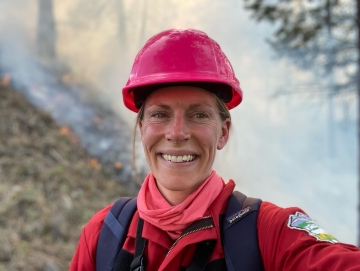
Kira Hoffman (she/her)
Career Profiles
Postdoctoral Researcher/Fire Ecologist
I am a researcher at both a university and a not-for profit organization where I am gaining experience to become a senior researcher. -
Zoë Ehlert (Video)
Career Profiles
Manager, Marker Assisted Breeding
I lead a team that develops canola crops by breeding plants with traits we are looking for. -
Zoë Ehlert
Career Profiles
Manager, Marker Assisted Breeding
I lead a team that develops canola crops by breeding plants with traits we are looking for. -
Jennifer Baltzer (she/her)
Career Profiles
Professor and Canada Research Chair in Forests and Global Change
I work at a university, teaching students and conducting research on the impact of climate change on forests in Canada and around the world. -
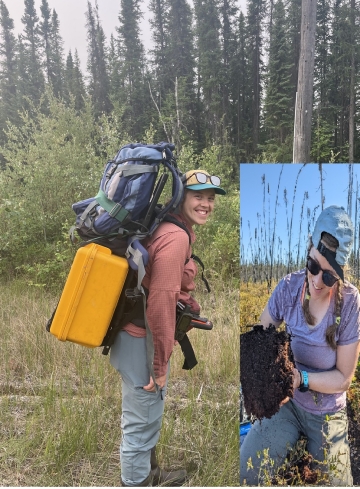
Caitlyn Lyons (she/her)
Career Profiles
Ph.D. Candidate
I am working towards my PhD and studying the forests in the Northwest Territories. -
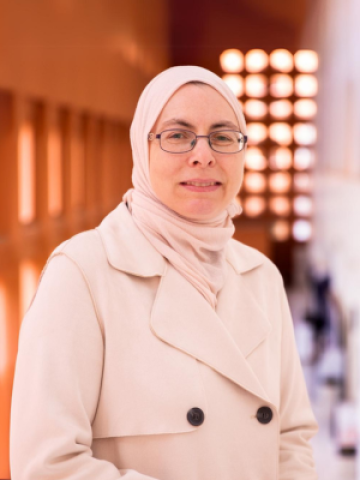
Joann Whalen
Career Profiles
Professor at the Faculty of Agricultural and Environmental Sciences,
I teach advanced courses on how to manage soils to produce healthy, nutritious food and maintain healthy ecosystem functions.

